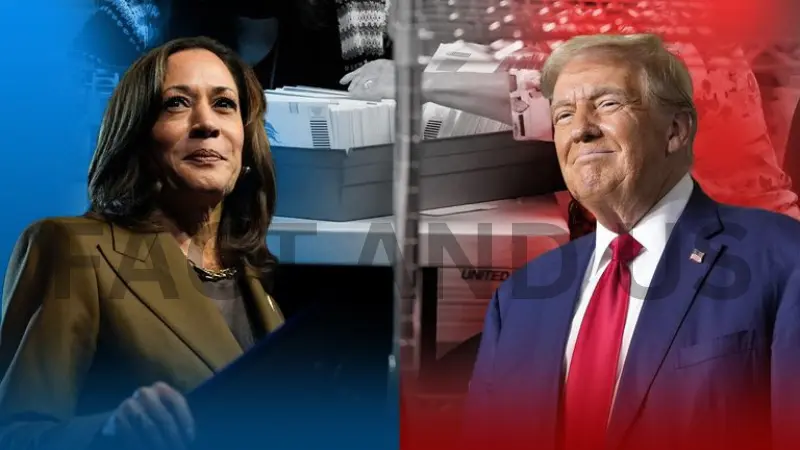On Tuesday, hundreds of millions of voters will head to ballot booths across the United States.
However, many of those votes – whether for Kamala Harris or Donald Trump or literally anyone else – won’t be official until they are counted and validated, which can take days.

Contents
Here is what to know about voting in 2024.
The process will be highly scrutinized in the battleground states expected to decide the election’s winner. Trump has already questioned the trustworthiness of many of their voting processes and in 2020, he challenged the results of many of their votes in court.
When does vote counting begin and how long will it take?
The first polls will close at 18:00 EST (23:00 BST) on Tuesday, but counting votes will extend far beyond then. For the most part, it may take weeks to count all votes with official tallies, partly due to state rules.
For instance, in both of two battleground states: Pennsylvania and Wisconsin, election workers cannot start processing mailed-in ballots until election day. That will slow down counting by a huge margin.
It is, of course, also quite important to note that news organizations often report the unofficial results and projections when they declare winners on election night or the following days, rather than waiting for the final and official count.
Who does the counting?


Counting, too varies by place and by machine used. Some counties feed ballots into optical scanners, others employ touch-screen systems and ballot-marking devices to enter votes. Scanners constitute the most widely used system. The results they tally are recounted and hand-checked for their accuracy.
- Early and Mail-In Ballots
Many states allow early voting, and more and more voters are using mail-in ballots. These are usually tallied first. Some states allow officials to start sorting through (but not counting) mail-in ballots pre-Election Day that helps propel the tally along faster. In other states, such as Pennsylvania and Wisconsin, the mail-in ballots aren’t counted until Election Day, which tends to delay a tally.

- In-Person Votes on Election Day
When people vote in person on Election Day, their ballots are usually counted first. This is possible because some machines scan and record the votes instantly. Once the polls close, data from every voting machine is transmitted to a central location where the total votes are calculated.
- Provisional Ballots
Provisional ballots are used in case of invalid voter registration or not producing identification. Before such ballots are counted, they need to be confirmed for eligibility, and this process may take some days to resolve.
- Counting and Reporting Process

Counting is carried out in county election offices with careful, step-by-step procedures to minimize the possibility of mistakes. Election officials doublecheck each tally and review every quality control procedure taken to spot any errors. Results are often reported on election night, but those numbers are often unofficial and only fluctuate as more ballots are counted.
- Verification of Results
Once all of the votes are counted, the result is certified. Certification generally involves checking totals and possibly looking for anomalies or conducting audits. Most states certify their results a week or so after Election Day, although recounts or judicial challenges can create delays in close races.
- Protection Against Mistakes
Electronic voting machines with paper printouts, or both electronic and paper ballots, are available in most states to provide a paper record. These allow for an audit or recount when it is required. Usually, poll watchers and bipartisan teams are also responsible for monitoring the counting process for probity.
From early voting to final certification, every step in the U.S. election counting process is designed to uphold accuracy and transparency, so that every vote is counted and verified before the result is official.
stay connected with fact and us for more such news
